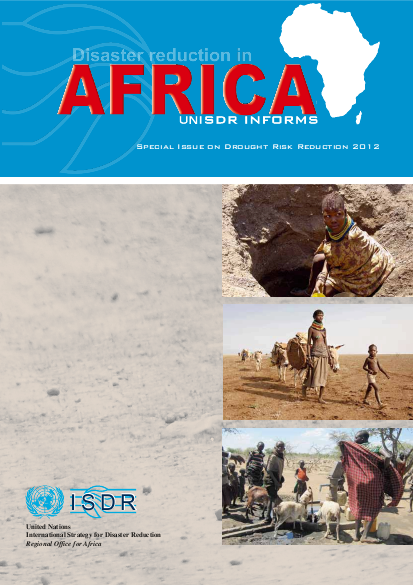
The 2010/2011 drought, which affected the Horn of Africa, in particular the pastoralist communities in Kenya, Ethiopia and Somalia, and caused migration across the borders, immense loss of livestock as well as human losses, with more than 13 million people affected1, was not un-expected. Indications of the drought conditions were received as early as September 2010; nevertheless few coordinated preventive measures were undertaken to respond to the predictions. Although possible drought mitigation measures are known by many actors who are working in drought prone areas in the region, it was only when “The CNN Effect” trickled in, when pictures of starving children, dying livestock and dried out waterholes were shown on TV, that international aid agencies and the government started to act. This is not only to the despair of affected communities, who feel left alone until lives and livelihoods have already been lost, but also to the frustration of both development and humanitarian actors as they have stressed in numerous discussions which took place in the Horn of Africa. The question posed over and over again is: Why was there no early action following the early warning? There are many conflicting professional opinions circling around answering this question. The fourth Africa Drought Adaptation Forum, organized by UNISDR Regional Office for Africa and the UNDP DDC Office in Nairobi in October 2011 discussed key gaps affecting the long-term drought adaptation and mitigation efforts in the Horn of Africa with experts, government officials and community members from the African continent as well as from Asia and Europe. One challenge, which calls for improvement of the existing early warning systems in the Horn of Africa, is the slow dissemination of warnings which do not reach the local level in some cases. If they do, sometimes they are not understood by end users, and if understood, capacity to actually act on them is weak. Some partners indicate that although there are dedicated development funds as well as there are dedicated humanitarian funds, there is a time gap between the two. While development funding is very slow in process and it cannot ad hoc be applied for, humanitarian funding is faster to access but is granted only once a humanitarian crisis has already unfolded. The critical period in which climate and meteorological forecasts indicate the high probability of a drought condition to materialize but in which no expert can give indications which are 100 per cent sure to happen, neither of the two funding streams are available. This is unfortunate though the period which decides the intensity of the impact of the drought on lives and livelihoods, and this is the period in which drought risk reduction measures have the highest chance of success. Equally slim are budgetary provisions from government side since there is hardly allocation for disaster risk reduction or mitigation funds, although some governments do have emergency funds established, which like the humanitarian funding can be accessed for response and relief activities, but only when the time window for drought risk reduction activities has already closed. Another challenge for early response is the adequate planning which is often lacking. While there are development plans as well as contingency plans, which are highly response focused, there are no plans which can be triggered by the early indications of the crisis, and which can be applied when it is still early enough for drought risk reduction measures to be carried out. This shows again the need for bridging the gap between development and humanitarian action. Finally it is evident, that drought prone areas in the Horn of Africa do not have access to basic services. Apart from water and food, which come to mind immediately, access to education and health services is either reduced or almost nonexistent especially for pastoralist communities which are dependent on fodder for their livestock. There is no access to markets which means that in case of drought, pastoralists cannot destock locally, but need to travel very far to sell their livestock; by the time they reach the big markets in the big cities the condition of the animals has often deteriorated so much, that only a small percentage of their economic value can be recovered. In this Special Issue on Drought of the UNISDR Africa Informs Magazine, which has been possible through the financial contribution of ECHO, we are looking at drought risk reduction through the lens of the Hyogo Framework of Action (HFA), the global framework for disaster risk reduction. We would like to feature the excellent work which is being done throughout the African region, by putting it into perspective as a holistic approach is necessary to achieve better resilience to drought in the future.
